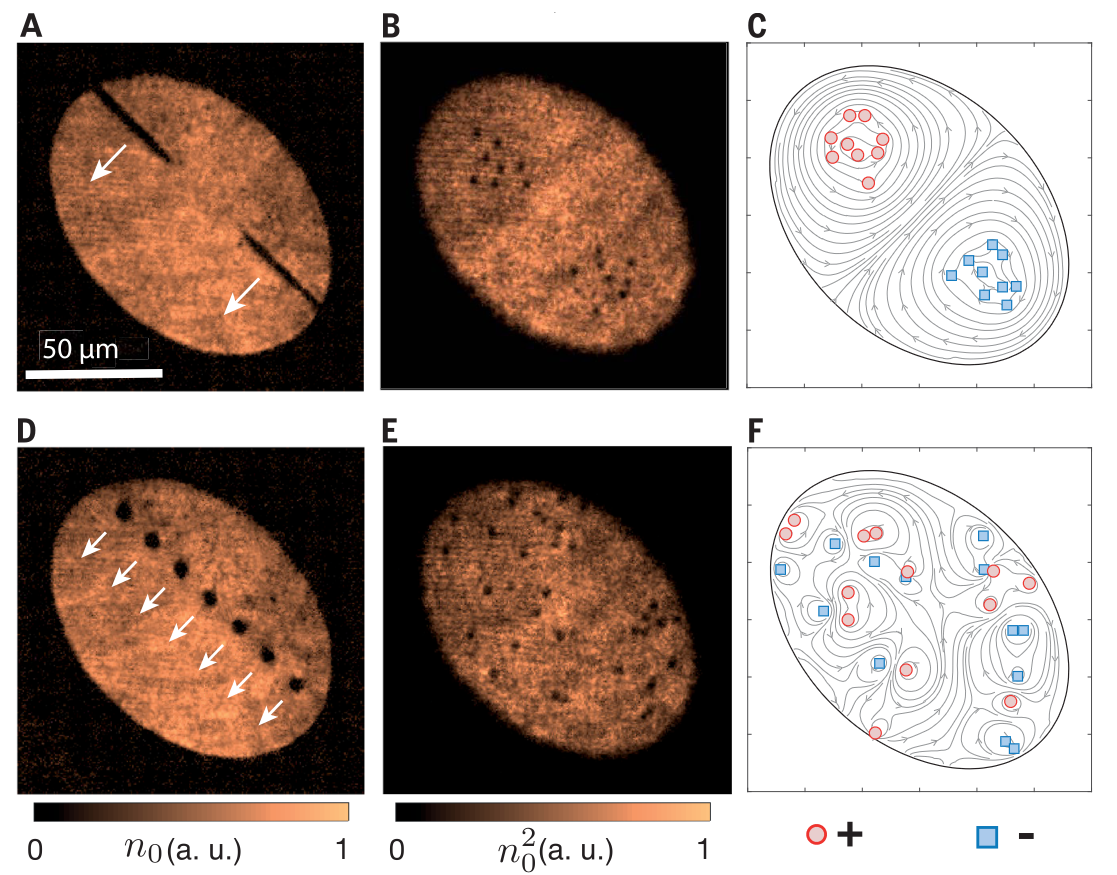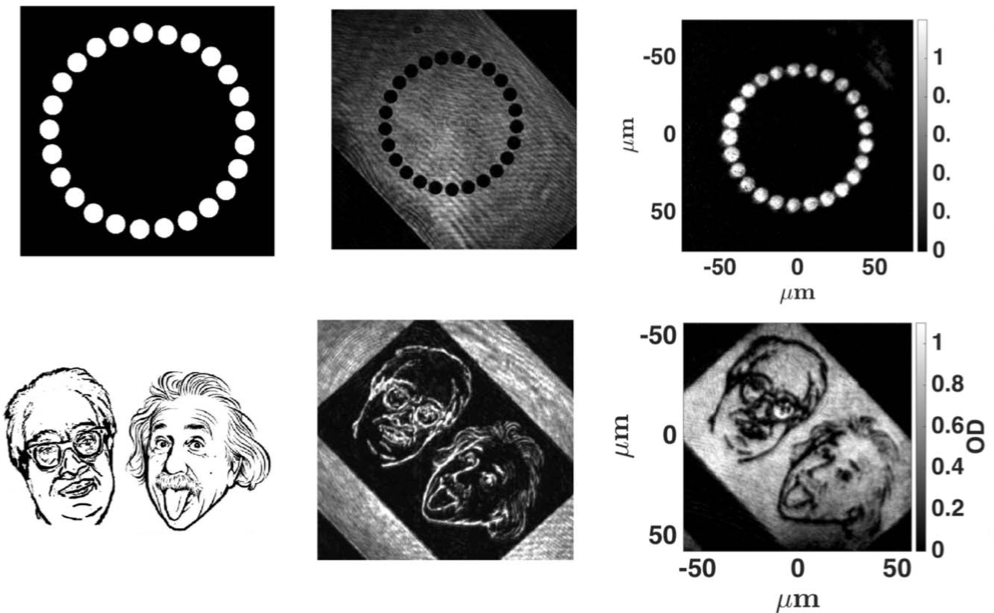
Publications

Optimizing persistent currents in a ring-shaped Bose-Einstein condensate using machine learning
We demonstrate a method for generating persistent currents in Bose-Einstein condensates by using a Gaussian process learner to experimentally control the stirring of the superfluid. The learner optimizes four different outcomes of the stirring process: (O.I) targeting and (O.II) maximization of the persistent current winding number and (O.III) targeting and (O.IV) maximization with time constraints. The learner optimizations are determined based on the achieved winding number and the number of spurious vortices introduced by stirring. We find that the learner is successful in optimizing the stirring protocols, although the optimal stirring profiles vary significantly depending strongly on the choice of cost function and scenario. These results suggest that stirring is robust and persistent currents can be reliably generated through a variety of stirring approaches.

Viability of rotation sensing using phonon interferometry in Bose-Einstein condensates
Charles W. Woffinden, Andrew J. Groszek, Guillaume Gauthier, Bradley J. Mommers, Michael. W. J. Bromley, Simon A. Haine, Halina Rubinsztein-Dunlop, Matthew J. Davis, Tyler W. Neely, Mark Baker, SciPost Phys. 15, 128 (2023) - Published 2 October 2023
In this work, we cool down rubidium atoms to close to absolute zero to form a Bose Einstein Condensate. We form this condensate into a ring, then create sound waves travelling around the circumference of the ring. These sound waves (or phonons) create a standing wave in the density of the condensate, with high- and low-density points around the ring which act as markers. Due to the superfluid nature of the condensate, these markers stay in the same location of the ring and don’t rotate, even if the lab frame of reference is rotating (e.g. due to Earth’s rotation). This means that these markers act as an absolute frame of reference - like the north-seeking pole on a compass and so could potentially be used for navigation in situations where satellite navigation is not available e.g. under water.

Scaling dynamics of the ultracold Bose gas
Ashton S. Bradley, Jordan Clarke, Tyler W. Neely, and Brian P. Anderson, Phys. Rev. A 106, 053316 – Published 18 November 2022
The large-scale expansion dynamics of quantum gases is a central tool for ultracold gas experiments and poses a significant challenge for theory. In this work we provide an exact reformulation of the Gross-Pitaevskii equation for the ultracold Bose gas in a coordinate frame that adaptively scales with the system size during evolution, enabling simulations of long evolution times during expansion or similar large-scale manipulation.

Turbulent Relaxation to Equilibrium in a Two-Dimensional Quantum Vortex Gas
M. Reeves et. al
Phys. Rev. X 12, 011031
In this work, we explored the relaxation of initially non-equilibrium configurations of vortices. Impressively, the vortex configurations in equilibrium were found to closely match the predictions of the point vortex model.

Atomtronic Many-Body Transport using Husimi Driving
B. Mommers et. al
In this work, we experimentally demonstrate the application of Husimi's solution to an interacting many-body system, namely optically- and magnetically-trapped Bose-Einstein condensates subject to resonant and off-resonant linear magnetic driving potentials.

Roadmap on Atomtronics: State of the art and perspectivecs
M Baker et al, 2021
AVS Quantum Sci. 3, 039201 (2021)
Roadmap on Atomtronics: State of the art and perspective, has now been published online in AVS Quantum Sci. 3, 039201 (2021). This is a review of the latest progress in atomtronics-enabled quantum technologies, such as matter-wave circuits and atom chips.

Dynamic high-resolution optical trapping of ultracold atoms
Gauthier Guillaume et al, 2020
Advances In Atomic, Molecular, and Optical Physics Volume 70, 2021, Pages 1-101
Our review of configured optical trapping techniques for cold atoms has been posted on the arXiv. We have aimed for a detailed technical review that highlights some of the subtleties in implementing acousto-optic deflector, DMD and SLM traps, as a complete guide to the experimentalist. The chapter will appear in Advances in Atomic Molecular and Optical Physics later this year.

Engineering Spin Domains in a Binary BEC
A Pritchard et. al
In a 2-component BEC, confined in an all optical line trap, we use a spin-dependent optical barrier beam to localise one of the spin components. By time-averaging the beam we can furthermore create multiple spin sites.

Universal dynamics in the expansion of vortex clusters in a dissipative two-dimensional superfluid
Stockdale Oliver R. et al, 2020
Physical Review Research, 2, 3
A large ensemble of quantum vortices in a superfluid may itself be treated as a novel kind of fluid that exhibits anomalous hydrodynamics.

Quantitative Acoustic Models for Superfluid Circuits
Gauthier Guillaume et al, 2019
Physical Review Letters, 123, 26
We experimentally realize a highly tunable superfluid oscillator circuit in a quantum gas of ultracold atoms and develop and verify a simple lumped-element description of this circuit.

Giant vortex clusters in a two-dimensional quantum fluid
Gauthier Guillaume et al, 2019
Science, 364, 6447, pp. 1264-1267
Adding energy to a system through transient stirring usually leads to more disorder. In contrast, point-like vortices in a bounded two-dimensional fluid are predicted to reorder above a certain energy, forming persistent vortex clusters.

Phase and micromotion of Bose-Einstein condensates in a time-averaged ring trap
Bell Thomas A. et al, 2018
Physical Review A, 98, 1
Rapidly scanning magnetic and optical dipole traps have been widely utilized to form time-averaged potentials for ultracold quantum gas experiments.

Mesoscopic Dynamical Differences from Quantum State Preparation in a Bose-Hubbard Trimer
Olsen M. K., Neely T. W. and Bradley A. S., 2018
Physical Review Letters, 120, 23
Conventional wisdom is that quantum effects will tend to disappear as the number of quanta in a system increases, and the evolution of a system will become closer to that described by mean-field classical equations.

Roadmap on structured light
Rubinsztein-Dunlop Halina et al, 2017
Journal of Optics, 19, 1, pp. 13001
Structured light refers to the generation and application of custom light fields. As the tools and technology to create and detect structured light have evolved, steadily the applications have begun to emerge.

Direct imaging of a digital-micromirror device for configurable microscopic optical potentials
Gauthier Guillaume et al, 2016
Optica, 10, 3, pp. 1136-1143
The development of novel trapping potentials for degenerate quantum gases has been an important factor driving experimental progress in the field. The introduction of spatial light modulators (SLMs) into quantum gas laboratories means that a range of configurable geometries are now possible.

Bose–Einstein condensation in large time-averaged optical ring potentials
Bell T A et al, 2016
New Journal of Physics
Interferometric measurements with matter waves are established techniques for sensitive gravimetry, rotation sensing, and measurement of surface interactions, but compact interferometers will require techniques based on trapped geometries.

Note: High turn density magnetic coils with improved low pressure water cooling for use in atom optics
McKay Parry Nicholas et al, 2014
Review of Scientific Instruments, 85, 8, pp. 86103
We describe a magnetic coil design utilizing concentrically wound electro-magnetic insulating (EMI) foil (25.4 μm Kapton backing and 127 μm thick layers). The magnetic coils are easily configurable for differentcoil sizes, while providing large surfaces for low-pressure (0.12 bar) water cooling.

Dynamical tunneling with ultracold atoms in magnetic microtraps
Lenz Martin et al, 2013
Physical Review A, 88, 1
The study of dynamical tunneling in a periodically driven anharmonic potential probes the quantum-classical transition via the experimental control of the effective Planck's constant for the system.

Growth dynamics of a Bose-Einstein condensate in a dimple trap without cooling
Garrett Michael C. et al, 2011
Physical Review A, 83, 1
We study the formation of a Bose-Einstein condensate in a cigar-shaped three-dimensional harmonic trap, induced by the controlled addition of an attractive “dimple” potential along the weak axis.

Observation of shock waves in a large Bose-Einstein condensate
Meppelink R. et al, 2009
Physical Review A, 80, 4
We observe the formation of shock waves in a Bose-Einstein condensate containing a large number of sodium atoms. The shock wave is initiated with a repulsive blue-detuned light barrier, intersecting the Bose-Einstein condensate, after which two shock fronts appear.
